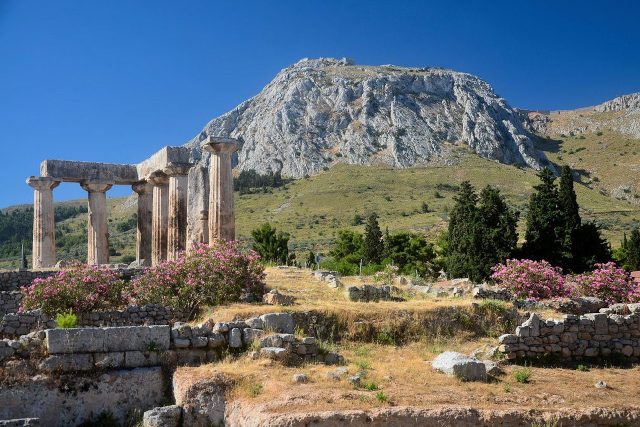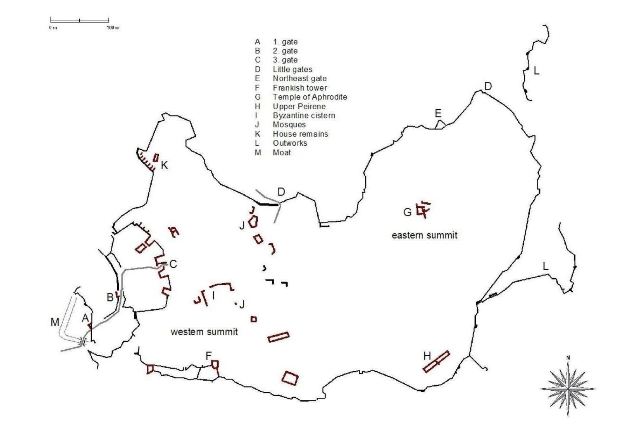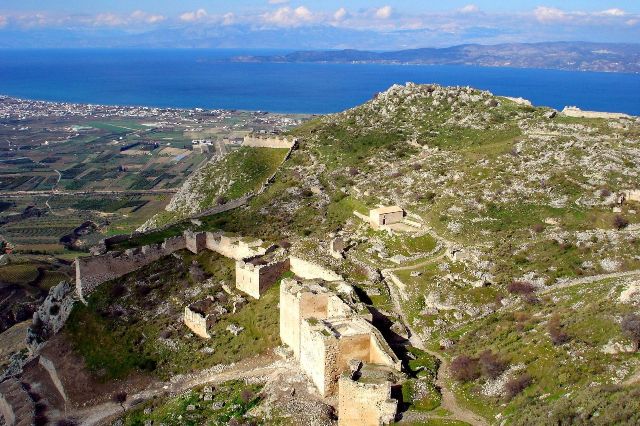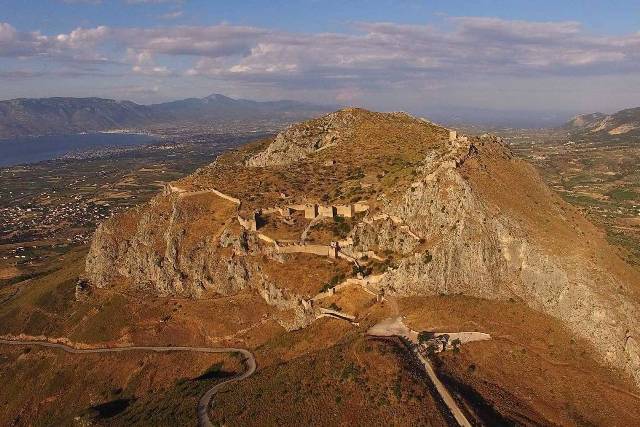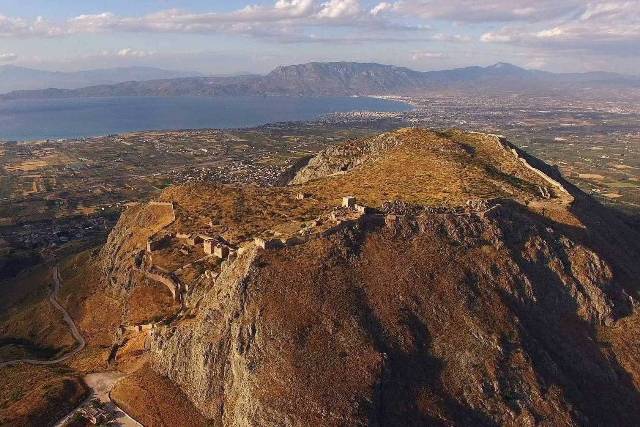Acrocorinth
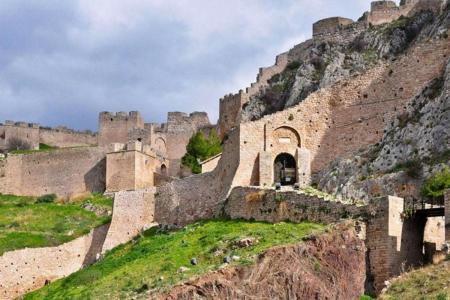 ACROCORINTH - Distance from Ermioni: 116 kms/2 hours
ACROCORINTH - Distance from Ermioni: 116 kms/2 hours
Acrocorinth has always been the fortress acropolis of Ancient and Medieval Corinth, being on a steep, rocky hill 575 meters high at its highest peak, with uninterupted views across the Corinthian and Saronic Gulfs. First built in the early 6th century BC, it has been an important fortified citadel throughout history for the Ancient Greeks, Macedonians, Romans, Byzantines, Frankish Crusaders, Venetians, Ottomans and eventualy the Hellenes following the Greek War of Independence, 1821-1829. More recently, there was a German garrison stationed there following the Nazi invasion of Greece in May 1941. Acrocorinth is considered to be the oldest and largest fortress in the Peloponnese, with its walls being nearly 2,000 metres in length. With a secure water supply, the fort was a last line of defense of southern Greece, repelling various enemies throughout history.
The Acrocorinth is only accessible on its Western side, where there is a triple wall with three successive fortified gates. Most of the defensive towers and walls we see today are medieval, but built on ancient foundations. There is a moat before the first outer gate, with cannon enplacements on the first and second middle gates. Once past the giant third gate, one sees a multitude of buildings, sancturies, mosques, fountains and a Christian church, which has three wall frescoes showing through the Ottoman clay plaster.
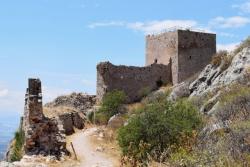 The West peak has a high Frankish Crusader watchtower (right) protecting the whole Triple wall access and the lower town. Within the Acrocorinth fortifications, at the highest peak, are the foundations and ruins of the famous Temple of Aphrodite. During the ancient period, up to a thousand of her 'priestesses' practiced the oldest profession, although most practiced in the city of Corinth itself. Not much is left of this archaic temple, only the foundation stones and a single column base, because other structures were built on this site during the Roman, Medieval and Ottoman Turkish periods. Sultan Mehmed II captured the fortress from the Byzantines in 1458, five years after conquering Constantinople, building four mosques within its walls. Ruins of some are still visible, including Ottoman fountains.
The West peak has a high Frankish Crusader watchtower (right) protecting the whole Triple wall access and the lower town. Within the Acrocorinth fortifications, at the highest peak, are the foundations and ruins of the famous Temple of Aphrodite. During the ancient period, up to a thousand of her 'priestesses' practiced the oldest profession, although most practiced in the city of Corinth itself. Not much is left of this archaic temple, only the foundation stones and a single column base, because other structures were built on this site during the Roman, Medieval and Ottoman Turkish periods. Sultan Mehmed II captured the fortress from the Byzantines in 1458, five years after conquering Constantinople, building four mosques within its walls. Ruins of some are still visible, including Ottoman fountains.
The long climb to the summit of Aphrodite's temple is worth the trouble, as the panoramic views from this point are just amazing, not just of Acrocorinth itself, but the new coastal city of Corinth and the whole Corinthian Gulf below, including the Corinth Canal.
From Ancient Corinth, take the winding mountainside road which leads up to Acrocorinth. The distance to the Acrocorinth car park is approximately 4 kms. From the small car parking area, you will see the narrow access pathway which leads up to the first outer gate. This pathway continues through the first, second and third gates, and is made up of irregular cobblestones, so sensible footwear is advisable. Once through the third gate, the various pathways are beaten earth tracks, so take care if the ground is wet.
It is best to visit Acrocorinth early or mid-morning, as the site is open from 08:30 and closes at 15:00 and you will need lots of time. Occasionally the gates will close at 14:00 as it can take up to 2 hours to view the vast complex. Admission to Acrocorinth: Free
